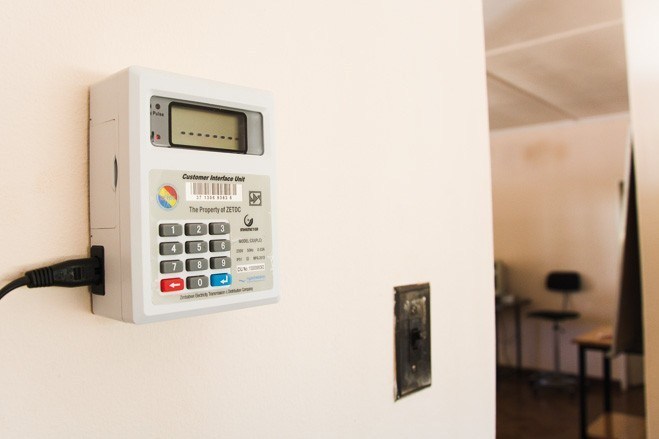Alarm over potential rise in energy costs
Businesses are increasingly getting worried about the potential rise in energy expenses as the country faces crippling power shortages going into the year and some will take drastic measures that include staff rationalisation, reduced production and rising costs of products.
Zimbabwe’s prolonged power crisis is set to worsen after the Zambezi River Authority (ZRA) this week cut the amount of water allocated to ZESA and ZESCO for power generation at Kariba Dam due to the water crisis.
ZESA and the Zambian utility, ZESCO, equally share water at Kariba for power generation.
In that regard, the ZRA has directed the average electricity generation at Kariba Power Station at 214 megawatts (MW) until the end of the March quarter of 2024.
While the Hwange Power Station will be providing much of the power, it also continues to face some technical glitches while Independent Power Producers (IPPs) are feeding only about 18 MW into the national grid.
Confederation of Zimbabwe Industries (CZI) president, Kurai Matsheza, told Business Weekly that electricity costs have constantly been increasing while at the same time supply remains depressed.
“Some companies will switch to more expensive alternative sources of power, so again, it is an increase in cost.
“When that happens, combined with the real cost of electricity that has aggressively gone up, it just makes the cost of producing more expensive, and those costs will be transferred to the goods and services that are being sold,” he said.
He added, “It is not good for us as producers but also not good for consumers; this will just make the cost go up.”
While the companies are investing in alternative energy, Matsheza said most of them are short-term, as huge power projects require significant capital outlays.
According to the energy regulator, the Zimbabwe Energy Regulatory Authority (ZERA), there has been increased investment in renewable energy by IPPs, mainly for their own consumption, in order to offset the adverse impact of erratic power supplies.
By harnessing the power of the sun for solar energy, businesses are tapping into a sustainable and renewable energy source, reducing reliance on conventional power systems, especially hydro, which is also prone to the effects of the El Nino weather phenomenon.
According to ZERA, the majority of energy investments are now into solar energy, with some thermal, mainly in the mining sector.
ZERA noted that most successful projects are the ones funded by private companies and in most cases, they are produced for their own consumption.
Matsheza said that as the price of products goes up, consumers will not be able to buy them; hence, demand comes down, which is a burden on industry producers.
“Because either way we are suffering as the demand side is coming down because of prices. If you are producing fewer and fewer products, it is a sign that your business is shrinking.
“So yes, some rationalisation of sorts might have to happen. If you are producing from various points, you might have to scale back and maybe concentrate on one location, so naturally that does also affect employment levels,” he said.
Matsheza said raising capital for energy projects is not just a one-day event; it takes time; hence, the solutions are short-term, medium-term, long-term, and long-term.
Agro-focused retailer, CFI Holdings, said the group uses different energy sources, with ZESA being the main power source for most operations, with lower usage for shops with solar backup options.
It said diesel-powered generators are mostly used as an alternative to ZESA in cases of load-shedding.
“The group has been focused on cleaner sources of alternative power, and it has rolled out a programme to install solar systems for shops and offices, with 44 percent of shops already using the power source,” the company said.
It noted that in the medium to long term, the group plans to invest in solar farms to sustain its manufacturing activities.
Victor Bhoroma, an economist, said power is the gateway to productivity and industrialisation in an economy; hence, without addressing power generation, the Zimbabwean economy will not achieve consistent growth.
He said the loss in generation output means prolonged power cuts of 6 to 12 hours per day, and this is unsustainable for the local economy, which is heavily skewed towards the agro-industry and mining, which require an uninterrupted power supply.
“Businesses will have to invest more in alternative power, which adds another layer to the cost of doing business and increases consumer prices. A lot of productive time will be lost, which entails operating below optimum capacity and retrenching labour,” he said.
He added that sales and markets are also lost in the process and in the end, most businesses end up substituting local suppliers with imports.
Bhoroma said the lack of power or sufficient power supply in the economy is one of the reasons the cost of production as a country is uncompetitive.
“Secondly, it is also the major reason why we have high levels, especially of food inflation, because the power used to process and manufacture food items is alternative power, which is expensive, and this could lead to a general increase in inflation,” he said.
Bhoroma said some machines cannot run on generator power and hence require constant servicing and checking to see if they are running on generators because of the differences in terms of outage and voltage.
Another economist, Eddie Cross, said the situation is very serious and will affect businesses across the nation. It is not clear how businesses will respond, but some layoffs are inevitable.
“Many firms are running generators, and others are installing solar power panels and batteries. But where people cannot respond, they will have to cut costs and raise prices,” he said.-ebusinessweekly










